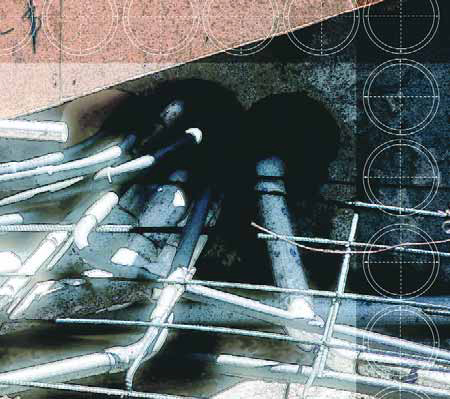construction
Coming up in New Orleans - first during the American Society of Landscape Architects' Expo (November 1-2) and later that same week at the International Pool & Spa Expo (November 5-6) - we'll be giving show attendees a special opportunity to
One of the real tricks in any art form can be the challenge of exercising restraint. Bigger isn't always better, and both scale and size do matter. In other words, just because you can create something grand, it doesn't always mean that you should. This principle of proportionality has a sharp, specific meaning in the world of the custom watershaper, especially when clients ask for something that is oversized for the property or more elaborate than called for by the setting or surrounding architecture. We all know where it comes from: Clients have seen something they like, and it
The Arthur D. Kinney Natatorium was designed with a practical mission in mind: From the outset, the facility was intended to provide long-term performance, outstanding aesthetics, ease of operation and minimal maintenance life cycles while enhancing the university's recruiting efforts and fostering individual and team achievement. In this case, however, the "individuals" aren't just star athletes pursuing records and titles. Rather, the natatorium on Bucknell University's Lewisburg, Pa., campus is unique in the sense that the school chose not to segregate varsity athletes from general student/recreational users. Indeed, the facility, part of the university's grand Kenneth G. Langone Athletics & Recreation Center, is designed to bring everyone
It seems so simple: No matter whether it's a residential or commercial project, the design parameters for indoor swimming pools generally call for warm water (typically 82 degrees, or a bit less for a competition pool), air temperature two to four degrees warmer than the water, and a relative humidity in the enclosed space of between 55% and 60%. And it wasn't some committee of pool builders who came up with those figures: The numbers are endorsed and published by the American Society of Heating, Refrigeration & Air-Conditioning Engineers (ASHRAE) and have been accepted as
Graced by an abundance of beautiful, natural streams, cascades, rivers and lakes spread across spectacular native landscapes, Utah is a dream location for watershapers. Not only is there a rising demand for crafted streams, ponds and cascades that look like they really belong, but the state itself is also a genuine design laboratory. Indeed, I send our crews out into the "wild" periodically to do nothing more than hike up and down local watercourses to see how Mother Nature does things. These waterways are
If the art of watershaping is ultimately about visuals, then creating a situation for yourself in which you're virtually guaranteed to create visual disruptions is something you certainly do not want to do. That's the situation I currently face in the renovation of a pool at a stunning, 1920s-vintage home in the heart of Los Angeles. As I indicated in my last column, it's a remarkably beautiful setting that features a 70-year-old pool that was well designed, expertly installed, well worth keeping - and surrounded by
For more than two full years, this project was my personal and professional obsession. It all started in 1993, when my client, a wealthy recording-industry magnate, called on me to design the landscape for a property he'd just acquired in Bel Air, one of the most exclusive neighborhoods in Los Angeles. The Spanish Colonial-style home had been built in the 1920s and was in a sad state of disrepair. By the time I arrived, it had been gutted to the studs, and very nearly all of the hardscape and plantings around the house had been torn out as well. What he was offering me was a tantalizingly blank canvas in a most spectacular setting. In the two years that followed, not only would we
From pools, spas and fountains to streams, ponds and waterparks, effective watershaping is largely about the plumbing that makes these systems work. If you see things that way, says hydraulics expert Steve Gutai, there's nothing more fundamental to success than making proper connections in the system's plumbing lines, first time, every time, and piping joints that will bear up under pressure for the long haul.
At its most basic, public art creates spaces in which people experience art without paying hard-earned dollars to own it or going to a museum or gallery to see it. Public art is also about giving everyone within eyeshot new types of experiences amid their daily routines. Perhaps it's an object they'll pass on the way to the subway or an environment they'll spot out of the corner of an eye as they drive to the grocery store. Maybe it's a place where people gather to eat lunch or a landmark for arranging meetings with friends. Whether it's familiar to the viewer or sneaks up unexpectedly, the work becomes
The notion that water can be used to treat physical problems and conditions is not new. In fact, when you study the history of watershaping and aquatic design, one of the first things you learn is that the ancient Romans might actually have had a better grip on the healing and nurturing powers of water than we ever will. In our own work in designing and installing environments that nurture the spirit and invigorate the body, we pursue that Roman heritage as best we can - and always keep water in mind as a key component. The project described in this article stands as one our most dramatic explorations of the curative power of water to date. The pool, spa and






















